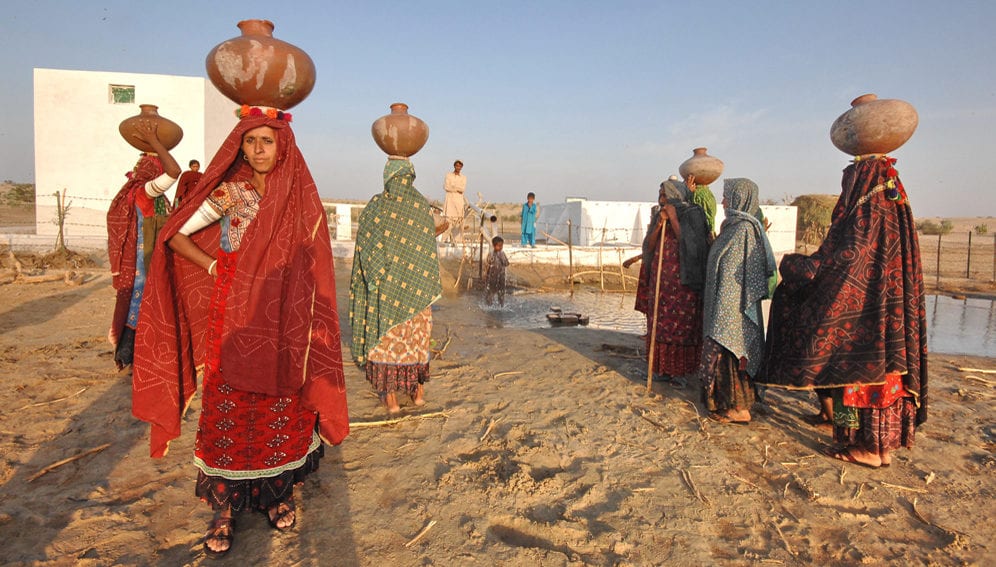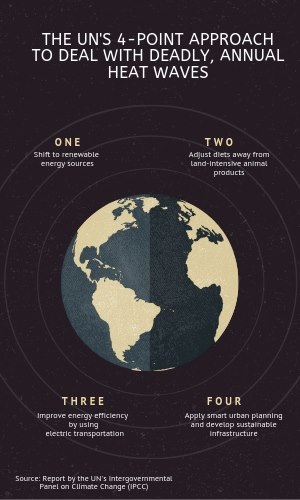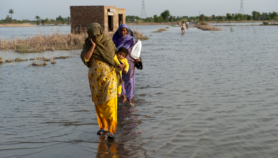08/04/19
Forecasting model allows Pakistan to anticipate heat waves

By: Saleem Shaikh
Send to a friend
The details you provide on this page will not be used to send unsolicited email, and will not be sold to a 3rd party. See privacy policy.
[ISLAMABAD] A new statistical heat wave forecasting model can help Pakistan predict the triggering and progress of the deadly weather events that plague the country every year, say researchers from Malaysia and Pakistan.
Pakistan experiences an average of seven heat waves a year. A single heat wave in May 2018 left 65 people dead in Karachi city. In 2015, heat waves caused the deaths of more than 1,200 people in Pakistan.
A study of the Quantile Regression Forests (QRF) model, due to be published on 1 June in Atmospheric Research, says that it is based on daily maximum temperature data from Princeton University's Global Meteorological Forcing for the period of 1948 to 2010 and data from the National Centres for Environmental Prediction (NCEP) of the US.
“While rapidly shifting weather patterns, including rising average summer temperatures, warming, humid days and shifting rainfall patterns, are leading to a rise in frequency and intensity of heat wave events, deploying statistical models can enhance the country’s heat wave preparedness and response ability”
Ghulam Rasul, former director-general of Pakistan Meteorological Department
The research team used Princeton’s data for the reconstruction of historical heat waves and reanalysed NCEP data to select appropriate sets of predictors to forecast heat waves in Pakistan with a lead time of 1 to 10 days, and using the QRF model.
The team tested the model to ‘predict’ 18 heat waves that occurred between 1992 and 2010 by calculating humidity and wind patterns during the summer months. They found the model capable of predicting the triggering and departure dates of heat waves at varying levels of accuracy.
“In view of the study results, I can confidently say that the QRF prediction model holds the key to achieving heat wave resilience in Pakistan,” Najeebullah Khan, study author and civil engineering faculty, Universiti Teknologi Malaysia, tells SciDev.Net.
Heat waves are defined as spikes in temperature beyond 45 degrees Celsius in the plains areas and beyond 40 degrees Celsius in the hilly areas. Average maximum temperatures of 42 degrees Celsius with a 5 to 6 degree Celsius rise, lasting eight days or more, are also considered heat waves.
According to a Pakistan-specific heat wave study published June 2018 in Atmospheric Research, Pakistan experienced 126 heat waves of varying durations from 1997 to 2015.
The study suggests a 75 per cent rise in heat waves by 2030 as compared to the 1997-to-2015 period, a 189 per cent rise by 2060 and a 277 per cent increase by 2090. This means the country will experience around 12 heat wave events annually by 2030, 20 such events by 2060 and 26 events by 2090.
Ghulam Rasul, former director-general, Pakistan Meteorological Department, says that Pakistan’s climate system is passing through a highly dynamic phase that is bringing surprising changes in thermal, moisture and wind regimes.
“While rapidly shifting weather patterns, including rising average summer temperatures, warming, humid days and shifting rainfall patterns, are leading to a rise in frequency and intensity of heat wave events, deploying statistical models can enhance the country’s heat wave preparedness and response ability,” Rasul tells SciDev.Net.
According to Omar Mahmood Hayat, chairman, National Disaster Management Authority, heat waves, being short-term phenomena, are difficult to forecast and always associated with high uncertainty.“We will consider how this new heat wave prediction approach, which provides adequate response time between heat wave forecasting and triggering, can be deployed in the country to overcome heat wave-related fallouts,” Hayat tells SciDev.Net.
This piece was produced by SciDev.Net’s Asia & Pacific desk.














